- Home
- >
- Preservation Archaeology Blog
- >
- Hands-On Archaeology: How to Make Prismatic Blades...
(March 14, 2017)—I recently attended WinterCount, an outdoor traditional technology gathering near Gila Bend, AZ. More than 650 people attended this sold-out event, more than 100 of whom were instructors. I attend as a student, to advance my skills in areas I have not yet explored. I have attended five of these gatherings over the last 15 years.
This year, my goal was to learn how to tan hides (more on that later). That was a three-day workshop, so I spent most of my time on that. On Sunday, we scraped connective tissues off the inside of the hide, and then set it to soak for a day in a tub of mesquite ash mixed with water.
While it soaked, I had Monday to partake in other activities. I chose to watch expert flintknapper Greg Nunn manufacture prismatic blades with a large lever-pressure device he designed. Greg is an incredible flintknapper who lives near Moab, Utah. I flintknapped with Greg and Bruce Bradley back in my Crow Canyon days. The blades Greg was making at this workshop are basically giant pressure flakes. These flakes are pushed off of a conical core in a pattern. When everything is set up right, the outside surface of the flake has two ridges running down its back from previous flake removals.
This is one of the first (blades) flakes he made while I was watching. The obsidian Greg used comes from Oregon, a variety called mahogany, mostly red in color. People used this technology in Europe and Mesoamerica. Using this technique enables the toolmaker to get a greater amount of cutting edge out of a chunk of rock. The blade flakes are more than twice as long as they are wide. People snapped them into sections and set them into arrows, darts, and swords.
In this photo, you can see the stump Greg wedges the core into to hold it steady as he pushes off the flake. The core in the stump is the one the flakes in this post were made from.
In this photo, the elk antler tine used to push off the blade is loaded between the core and the log used to push off the blade. The log above is held out near its end and carefully pushed down until the flake pops off the core. A string is tied around the tine so it does not shoot out and hit somebody when the flake is made.
In this photo, Greg is setting the core up for a flake removal. After each flake removal the core has to be reset in the stump. The carpet is to catch the flakes coming off the core so they don’t break. You can see how long the pressure pole is.
This is a series of blades Greg made over the course of the afternoon.
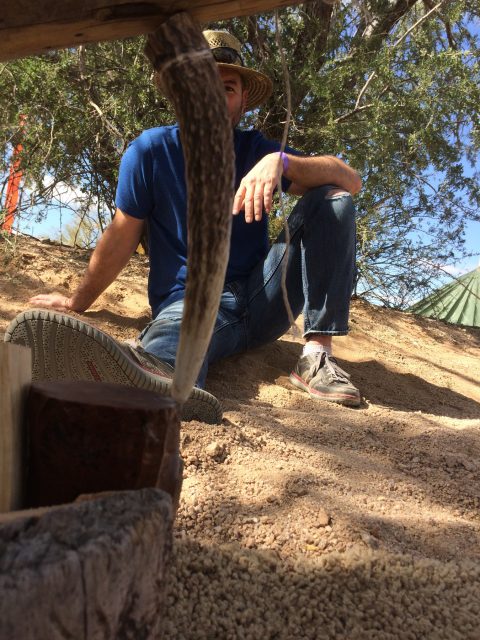 |
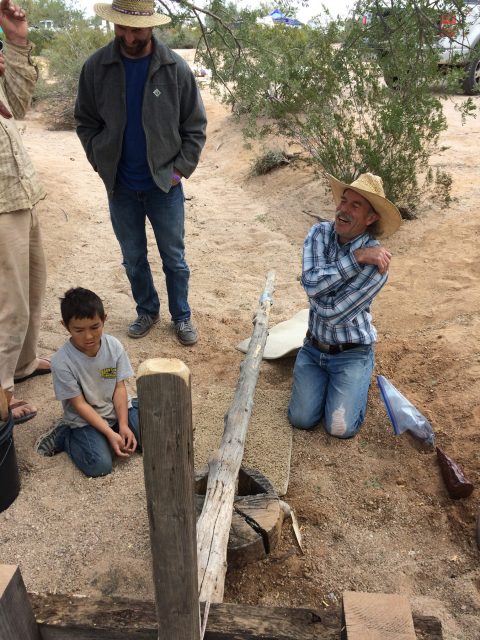 |
Here you can see the tine set up on the core and pressure being applied.
One of these days, I will play with this technology out at Steam Pump Ranch so visitors can see it—stay tuned!
One thought on “Hands-On Archaeology: How to Make Prismatic Blades, Featuring Greg Nunn”
Comments are closed.

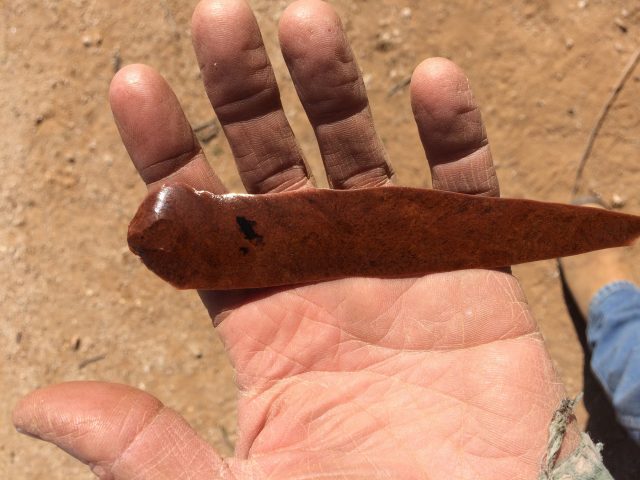
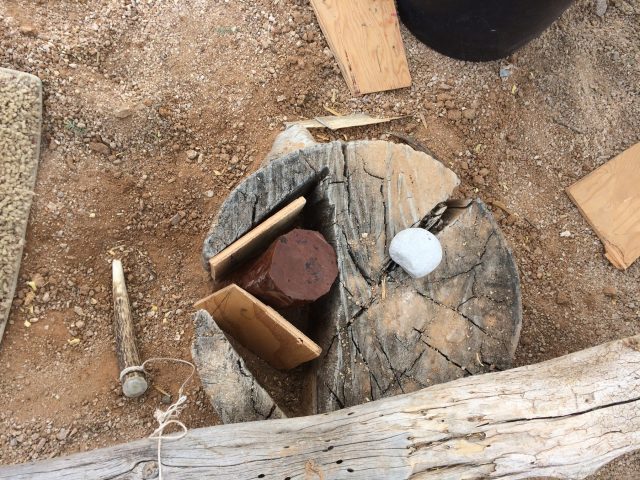
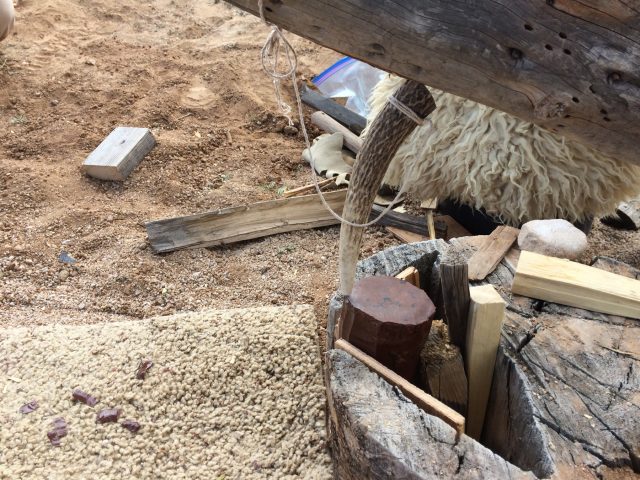
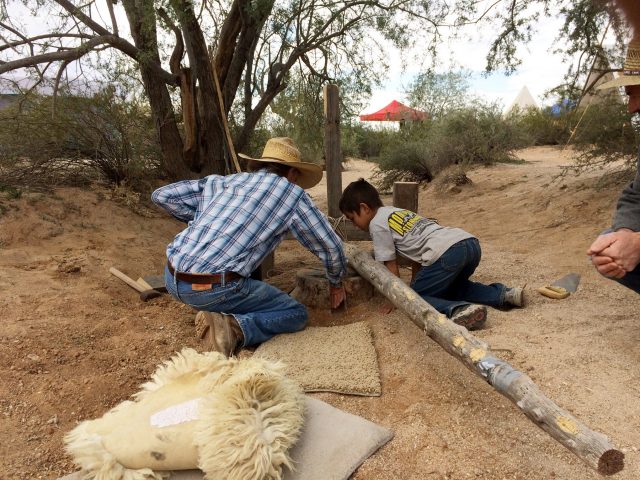
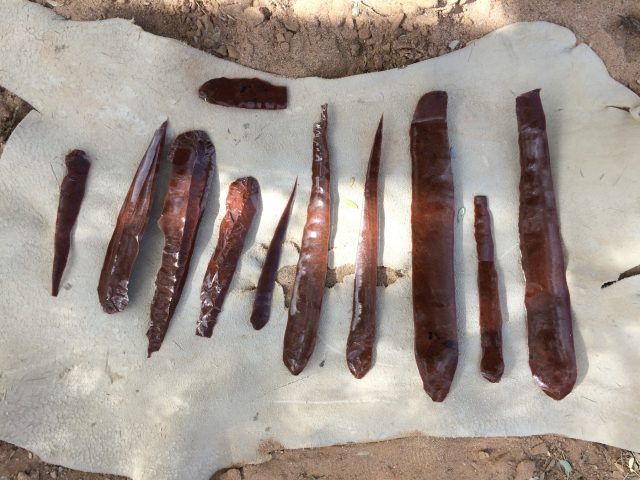
Wow! I can’t wait to see you doing this!